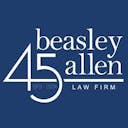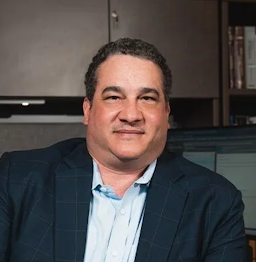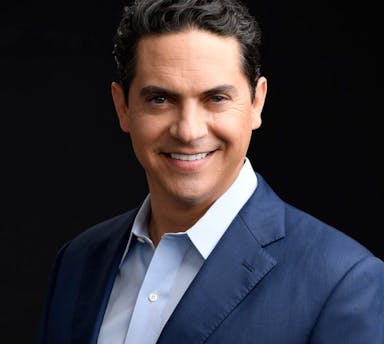How To Win a Civil Rights Case At Trial
A.Overcoming Negative Evidence (Exclude-Limit-Deal With).
1. Dealing With Negative Evidence
a. Drugs
b. Alcohol
c. Criminal History
d. Previous Arrests
e. Weapons
f. Mental Illness
g. Fighting
h. Use Of Force Against Officers
i. Injury To Officers
j. Not Complying With Commands
2. Motions In Limine
a. Exclude Negative Evidence
b. Limit Negative Evidence
3. Trial
a. Voir Dire
b. Opening Statement
c. Cross Examination
d. Direct Examination
e. Experts
f. Jury Instructions
g. Verdict Form
h. Closing Argument
i. Rebuttal Argument
4. Asking For Limited Instructions Re Negative Evidence
5. Bifurcation Of Trial Into Different Phases To Limit Negative Evidence
B.Motions In Limine
- Exclude Negative Evidence
- Limit Negative Evidence
- Criminal History
- Drugs
- Alcohol
- Gangs
- Tattoos
- Weapon / Loaded Weapon
- Injury To Officer/Others
- Comparative Negligence
- Bifurcation
- Special Instructions
- Experts – 702 (Daubert Analysis)
C.Jury Instructions
- Importance Of Instructions
- Model Instructions
- Special Instructions
- Introductory Instructions
- Liability Instructions
- Causation Instructions
- Damage Instructions
- Closing Instructions
D.Verdict Form
- Liability Questions (State And Federal Claims)
- Damages Questions (Specifying Different Elements of Damages)
- Importance Of Keeping It Simple
- Simple Questions Are Better For The Plaintiff(s)
- Ordering Of Questions
- Causation Questions
- By A Preponderance Of The Evidence
- Punitive Damages Questions
E.Jury Selection
- Preparing Proposed Voir Dire Questions For The Court
- Asking Group Questions To Jury Panel
- Asking Individual Questions To Individual Jurors
- Exercising Peremptory Challenges
- Exercising For Cause Challenges
- Challenges For Improper Challenges By Opposing Counsel
- Importance Of Being Likable
- Importance Of Being Professional
- Style Of Questions
- Framing The Case
- Dealing With Negative Evidence
- Who To Use Our Last Challenge On
F.Giving An Effective Opening Statement
- Mini-Openings
- Getting The Jury To Like You And Your Case
- Framing The Case
- Setting The Standards/Rules
- Acknowledging Negative Evidence
- Showing How The Standards/Rules Have Been
- Don’t Oversell The Case
G.Direct Examination/Ordering The Witnesses
- What Order To Call Your Witnesses In Your Case
- When To Call The Individual Officers
- When To Call The Experts
- When To Call Your Client
- How To Ask The Best Questions On “Direct Examination” To Make It Easy For Your Witness
- How To Rehabilitate Your Witness When Necessary
H.Effective Cross-Examination At Trial
- Preparing For Cross-Examination
- How To Form Your Questions
- The Ordering Of Your Questions
- Using Reports In Cross
- Using Statements In Cross
- Handling Difficult Witnesses
- Refreshing Recollection
- Using Exhibits With The Witnesses
- Hypothetical Questions
I.Handling The Experts At Trial
- Preparing Plaintiff’s Experts
- How To Handle Direct Examination Of Plaintiff’s Experts
- Rehabilitating Plaintiff’s Expert
- Cross Examination Of Defendant’s Police Practices Expert
- Developing Bias
- Taking Away Their Power
- Using Their Background And Experience To Your Benefit
- Confirming The Rules And Standards
- Reviewing Favorable Facts
- Framing The Case
- Using Effective Hypothetical Questions
- Cross Examination Of Defendant’s Medical Experts
- Establishing Bias
- Keeping It Simple/Getting Concessions
- Using The Defendant’s Expert To Help Your Case
- Points Of Agreement With Your Medical Experts
- Points Of Disagreement With Other Defense Experts
J.Giving A Persuasive Closing Argument
- Pulling It All Together
- Discussing Jury Selection
- Discussing Opening Statement
- Discussing Jury Instructions
- Discussing The Verdict Form
- Using Demonstrative Evidence
- Selecting The Best Exhibits
- Introductory Comments
- Framing The Case
- Reviewing The Standards/Rules
- Dealing With The Negative Evidence
- Reviewing The Evidence
- Implementing The Jury Instructions
- Implementing The Verdict Form
- Pre-Empting Defense Arguments
K.Presenting A Strong Rebuttal Argument
- Dealing With Burden Of Proof Argument
- Dealing With “20/20 Vision Of Hindsight” Argument
- Dealing With “Split Second Decision” Argument
- Dealing With “Difficult Job” Argument
- It’s All Plaintiff’s Fault – Bad Choices
- Dealing With Credibility Arguments
- Dealing With Negative Evidence
- Re-Framing The Case
- Reconnecting With The Jurors
- Saving Some Good Rebuttal Points
- Bringing The Passion In Your Rebuttal Argument
L.Post-Trial Issues
- Preparing The Proposed Judgment
- Preparing Memorandum Of Costs
- Motions For Statutory Attorney Fees
- JMOL Motions
- New Trial Motions
- Other Considerations
TLU Live HB Agenda
Track 1
Breakfast
Hosted by
- 9:00a




 Will Sykes · Dorothy Clay Sims · Sach OliverDepositions
Will Sykes · Dorothy Clay Sims · Sach OliverDepositions Coffee & Snacks
Hosted by
- 10:15a




 Will Sykes · Dorothy Clay Sims · Sach OliverDepositions
Will Sykes · Dorothy Clay Sims · Sach OliverDepositions Coffee & Snacks
Hosted by
- 11:30a




 Will Sykes · Dorothy Clay Sims · Sach OliverDepositions
Will Sykes · Dorothy Clay Sims · Sach OliverDepositions Lunch
Sponsored by
- 2:00p


 Christian Augustin · Sean Claggett Intake and Pre-Lit Workup
Christian Augustin · Sean Claggett Intake and Pre-Lit Workup Coffee & Snacks
Hosted by
- 3:15p





 Shannon Wise · Jennifer Morales · Brian BlankenshipManaging the Case and Putting Constant Pressure on the Defense
Shannon Wise · Jennifer Morales · Brian BlankenshipManaging the Case and Putting Constant Pressure on the Defense Coffee & Snacks
Hosted by
- 4:30p





 Shannon Wise · Jennifer Morales · Brian BlankenshipManaging the Case and Putting Constant Pressure on the Defense
Shannon Wise · Jennifer Morales · Brian BlankenshipManaging the Case and Putting Constant Pressure on the Defense
Track 2
Breakfast
Hosted by
- 9:00a


 Joseph Fried · Dan Ambrose High Performance Presentations
Joseph Fried · Dan Ambrose High Performance Presentations Coffee & Snacks
Hosted by
- 10:15a


 Haytham Faraj · Ted Wacker Overcoming Significant Hurdles on the way to $21.2 Million Verdict
Haytham Faraj · Ted Wacker Overcoming Significant Hurdles on the way to $21.2 Million Verdict Coffee & Snacks
Hosted by
- 11:30a

 Joseph FriedJoe Fried’s Top Tips for Winning Trucking Case
Joseph FriedJoe Fried’s Top Tips for Winning Trucking Case Lunch
Sponsored by
- 2:00p

 Sagi ShakedMaximizing Your TBI case
Sagi ShakedMaximizing Your TBI case Coffee & Snacks
Hosted by
- 3:15p

 Kurt ZanerHow fun, persuasive writing can lead to eight figure verdicts and settlements
Kurt ZanerHow fun, persuasive writing can lead to eight figure verdicts and settlements Coffee & Snacks
Hosted by
- 4:30p


 Khail Parris · Alex Wheeler Picking a $58,000,000 jury: Using fat words and skinny words for cause
Khail Parris · Alex Wheeler Picking a $58,000,000 jury: Using fat words and skinny words for cause
Track 3
Breakfast
Hosted by
- 9:00a

 Christian MorrisCross-Examination of Defense Medical Expert
Christian MorrisCross-Examination of Defense Medical Expert Coffee & Snacks
Hosted by
- 10:15a


 Bruce Broillet · Molly McKibben The Erin Andrews Invasion of Privacy Case: How the $55 Million non-economic Verdict was won
Bruce Broillet · Molly McKibben The Erin Andrews Invasion of Privacy Case: How the $55 Million non-economic Verdict was won Coffee & Snacks
Hosted by
- 11:30a


 Bruce Broillet · Molly McKibben The Erin Andrews Invasion of Privacy Case: How the $55 Million non-economic Verdict was won
Bruce Broillet · Molly McKibben The Erin Andrews Invasion of Privacy Case: How the $55 Million non-economic Verdict was won Lunch
Sponsored by
- 2:00p


 Bruce Broillet · Molly McKibben The Erin Andrews Invasion of Privacy Case: How the $55 Million non-economic Verdict was won
Bruce Broillet · Molly McKibben The Erin Andrews Invasion of Privacy Case: How the $55 Million non-economic Verdict was won Coffee & Snacks
Hosted by
- 3:15p

 Przemek LubeckiThe Mental Game for Trial - Performing Under Pressure
Przemek LubeckiThe Mental Game for Trial - Performing Under Pressure Coffee & Snacks
Hosted by
- 4:30p

 Alicia CampbellHow to Get Your First 8 Figure Verdict
Alicia CampbellHow to Get Your First 8 Figure Verdict
Track 4
Breakfast
Hosted by
- 9:00a



 Phillip Miller · Justin Kahn · Edward CiarimboliDesigning Exhibits - Design Ideas and Techniques
Phillip Miller · Justin Kahn · Edward CiarimboliDesigning Exhibits - Design Ideas and Techniques Coffee & Snacks
Hosted by
- 10:15a



 Phillip Miller · Justin Kahn · Edward CiarimboliDesigning Exhibits - Design Ideas and Techniques
Phillip Miller · Justin Kahn · Edward CiarimboliDesigning Exhibits - Design Ideas and Techniques Coffee & Snacks
Hosted by
- 11:30a



 Phillip Miller · Justin Kahn · Edward CiarimboliDesigning Exhibits - Design Ideas and Techniques
Phillip Miller · Justin Kahn · Edward CiarimboliDesigning Exhibits - Design Ideas and Techniques Lunch
Sponsored by
- 2:00p





 Lloyd Bell · Monte Tynes · Bob ByrneTry your FRKN Case
Lloyd Bell · Monte Tynes · Bob ByrneTry your FRKN Case Coffee & Snacks
Hosted by
- 3:15p

 John RomanoNavigating The Minefields Of Valuing Cases
John RomanoNavigating The Minefields Of Valuing Cases Coffee & Snacks
Hosted by
- 4:30p

 Dirk VandeverDirk's Trial Manifesto
Dirk VandeverDirk's Trial Manifesto
Party Sponsor
5:30pm-8:30pm
Barbie Pink & White Party
Hosted by








































































































































